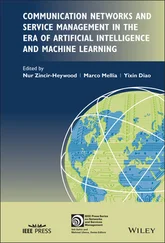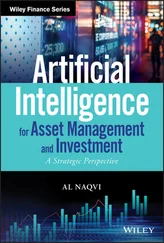1 Cover
2 Title page Cybersecurity Set coordinated by Daniel Ventre
3 Copyright First published 2020 in Great Britain and the United States by ISTE Ltd and John Wiley & Sons, Inc. Apart from any fair dealing for the purposes of research or private study, or criticism or review, as permitted under the Copyright, Designs and Patents Act 1988, this publication may only be reproduced, stored or transmitted, in any form or by any means, with the prior permission in writing of the publishers, or in the case of reprographic reproduction in accordance with the terms and licenses issued by the CLA. Enquiries concerning reproduction outside these terms should be sent to the publishers at the undermentioned address: ISTE Ltd 27-37 St George’s Road London SW19 4EU UK www.iste.co.uk John Wiley & Sons, Inc. 111 River Street Hoboken, NJ 07030 USA www.wiley.com © ISTE Ltd 2020 The rights of Daniel Ventre to be identified as the author of this work have been asserted by him in accordance with the Copyright, Designs and Patents Act 1988. Library of Congress Control Number: 2020940262 British Library Cataloguing-in-Publication Data A CIP record for this book is available from the British Library ISBN 978-1-78630-467-4
4 Introduction
5 1 On the Origins of Artificial Intelligence1.1. The birth of artificial intelligence (AI) 1.2. Characteristics of AI research 1.3. The sequences of AI history 1.4. The robot and robotics 1.5. Example of AI integration: the case of the CIA in the 1980s
6 2 Concepts and Discourses 2.1. Defining AI 2.2. Types of AI 2.3. Evolution of the themes over time 2.4. The stories generated by artificial intelligence 2.5. Political considerations
7 3 Artificial Intelligence and Defense Issues 3.1. Military policies and doctrines for AI: the American approach 3.2. Military AI in Russia 3.3. AI and the art of warfare 3.4. AI and cyber conflict
8 Conclusion
9 Appendices
10 Appendix 1: A Chronology of AI
11 Appendix 2: AI in Joint Publications (Department of Defense, United States)
12 Appendix 3: AI in the Guidelines and Instructions of the Department of Defense (United States)
13 Appendix 4: AI in U.S. Navy Instructions
14 Appendix 5: AI in U.S. Marine Corps Documents
15 Appendix 6: AI in U.S. Air Force Documents
16 References
17 Index
18 End User License Agreement
1 Chapter 1 Figure 1.1.The first artificial intelligence computer program “Logic Theorist”,... Figure 1.2.The organizers of a “conference” (two-month program) at Dartmouth Co... Figure 1.3.Geographic distribution of Chinese universities investing in AI betw... Figure 1.4. Location of Akademgorodok (district of the city of Novosibirsk) Figure 1.5.Manchester University Robot24. For a color version of this figure, s...
2 Chapter 2 Figure 2.1.Cloud of terms built up from the set of definitions12 in Table 2.1. ... Figure 2.2.Cloud of terms built from the expert system definitions in Table 2.2... Figure 2.3.Google Trends. Evolution of queries in the world related to “artific... Figure 2.4.Evolution of the presence of the concept of “expert systems” in AAAI... Figure 2.5.Evolution of the presence of the “Machine Learning” concept in AAAI ... Figure 2.6.Evolution of the presence of the “robot” concept in AAAI publication... Figure 2.7.Evolution of the presence of the “autonomous/autonomy” concept in AA... Figure 2.8.Evolution of the presence of the “military” concept in AAAI publicat... Figure 2.9.Evolution of the presence of the concept of “security” in AAAI publi... Figure 2.10.Evolution of the presence of the concept of “combat” in AAAI public... Figure 2.11.Evolution of the presence of the concepts “law” and “ethics” in AAA... Figure 2.12.Cloud of the 65 most commonly used terms in the OSTP Request for In... Figure 2.13.Cloud of the 65 most commonly used terms in the report “Preparing f... Figure 2.14.Cloud of the 65 most commonly used terms in “The national artificia...
3 Chapter 3 Figure 3.1.QDR (1997, 2001, 2006, 2010, 2014) and NDS 2018. For a color version... Figure 3.2.QDRs from 1997 to 2018. For a color version of this figure, see www.... Figure 3.3.The theme “robot” (robot, robotics) in NCARAI publications. Period 1... Figure 3.4.The theme “autonomy” (autonomy, autonomous) in NCARAI publications. ... Figure 3.5.The “robot” (robotics), “artificial intelligence” and “cyber” themes... Figure 3.6.The “artificial intelligence” and “cyber” themes in NCARAI publicati... Figure 3.7.AI is a component of cyberspace, which is itself a subset of informa... Figure 3.8. A simple modeling of cyberspace in three layers Figure 3.9.AI is present in each of the three layers of cyberspace. It extends ... Figure 3.10.Within each of the three layers of cyberspace, there are actors of ... Figure 3.11.In cyberspace, each of the layers has its own methods of hacking, a... Figure 3.12.If V represents cyberspace and R represents the non-cybernetic worl... Figure 3.13.An attack can exploit one or more of the layers of cyberspace to pr... Figure 3.14.Positioning AI in a cyberattack. AI malware will sometimes be oppos... Figure 3.15.Can an AI malware have a true panoptic or global view of its enviro... Figure 3.16. Attack and secure/defend, with or without AI Figure 3.17.Screenshot of the hkmap.live application (October 11, 2019). For a ...
1 Introduction Table I.1.The three strata of cyberspace (L = layer) and the place of AI in eac...
2 Chapter 1 Table 1.1.Universities involved in AI between 1970 and 1983 in China (classifie... Table 1.2. The objectives or goals of AI Table 1.3. Types of actions initiated by the CIA to understand and integrate AI Table 1.4.Non-intelligence actors that the CIA solicits and mobilizes and with ... Table 1.5. AI vocabulary within the CIA
3 Chapter 2 Table 2.1. Definitions of AI by year and chronological order Table 2.2. Definitions of expert systems Table 2.3. Definitions of “robot” Table 2.4. Some terms related to the “robot” world Table 2.5. Typology of AI Table 2.6. Some assertions or assumptions about AI intakes Table 2.7.Some assertions or hypotheses about what artificial intelligence is n... Table 2.8. Some assertions or assumptions about the future of AI Table 2.9.Some assertions or hypotheses about which subjects will escape the im... Table 2.10. Some assumptions about AI Table 2.11. Some consequences of artificial intelligence Table 2.12. Some AI and robots in Japanese manga and anime Table 2.13. National AI strategy documents Table 2.14.Key elements of the narratives of national strategies for artificial... Table 2.15. U.S. AI initiatives and strategy papers released in 2016
Читать дальше












